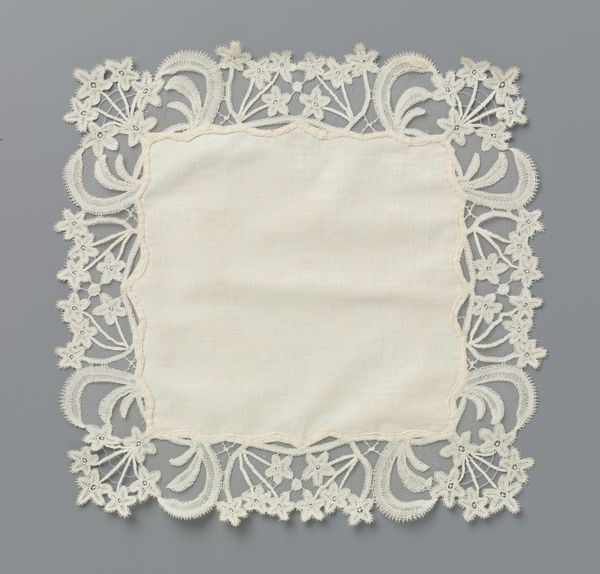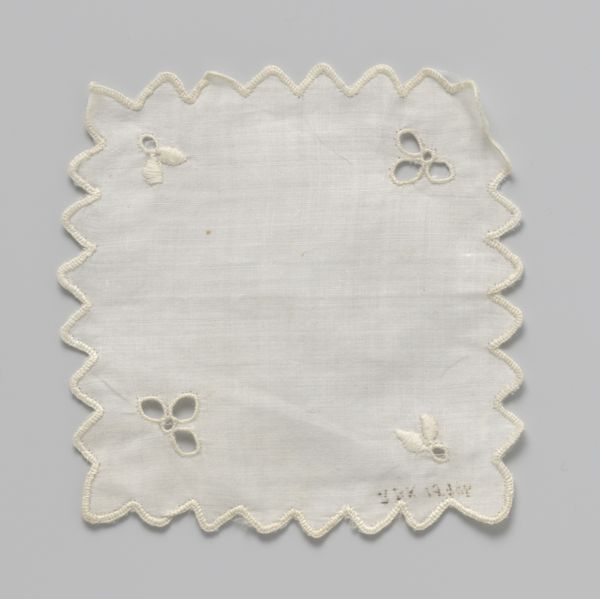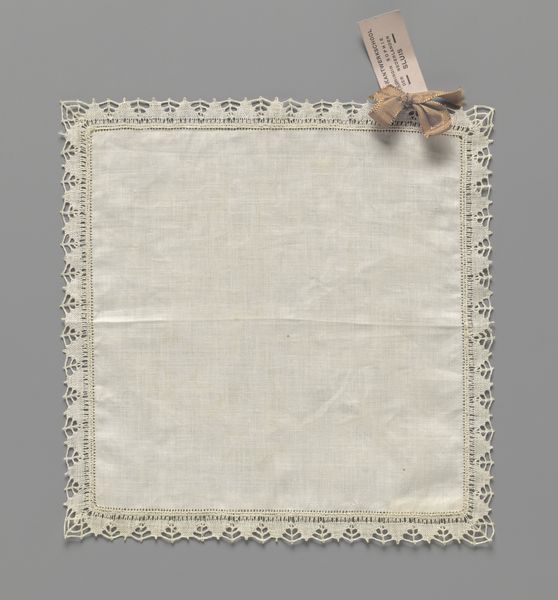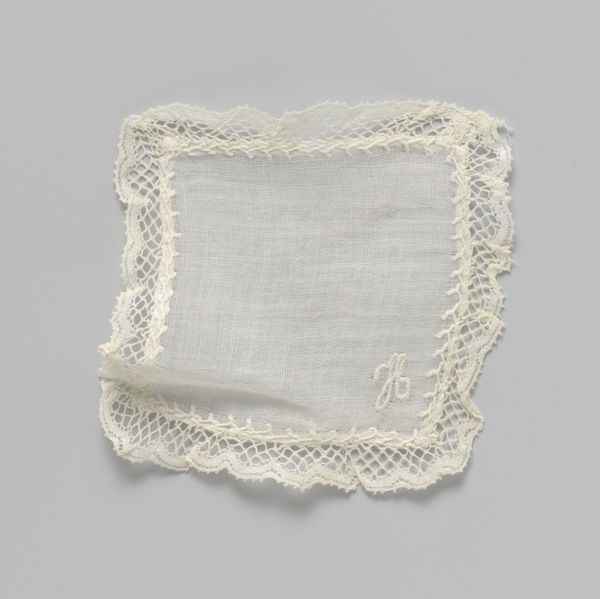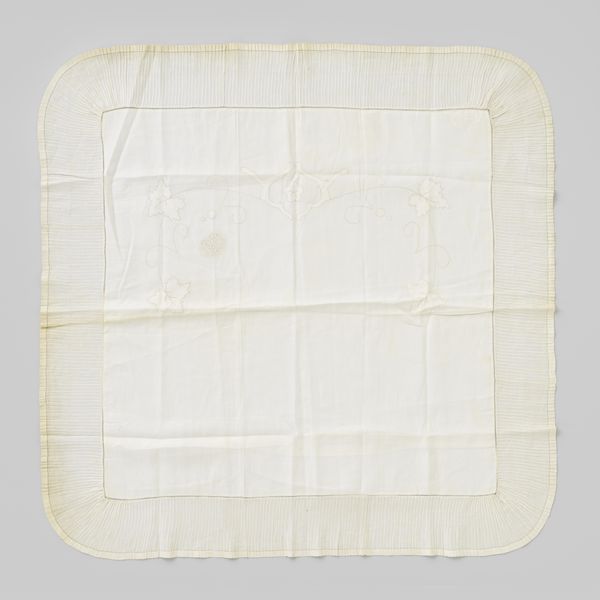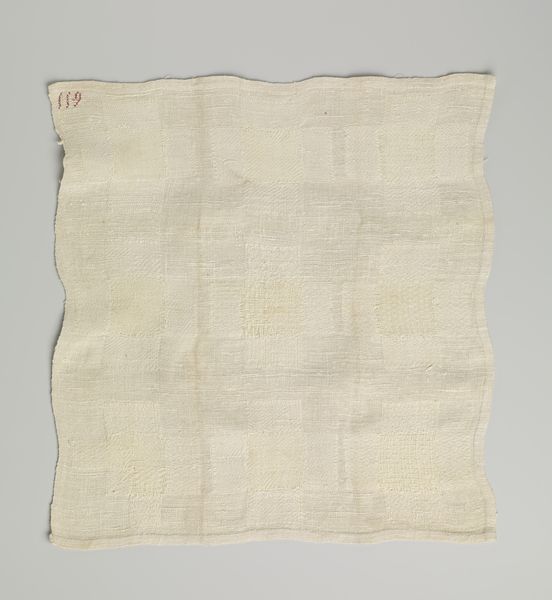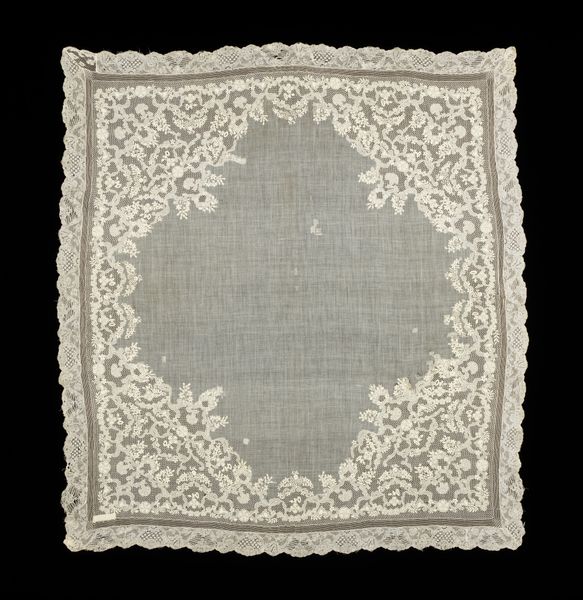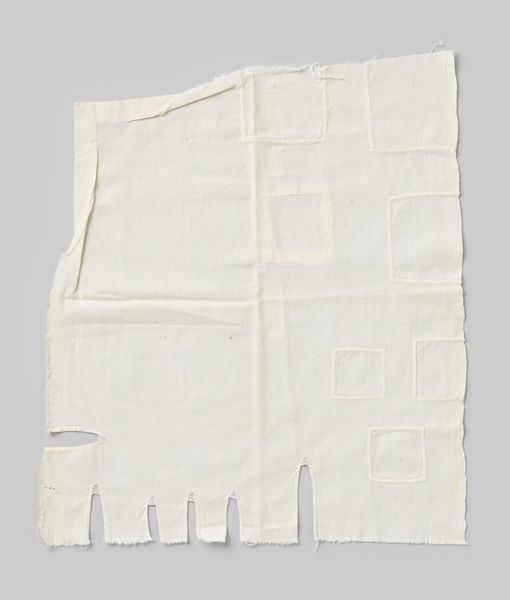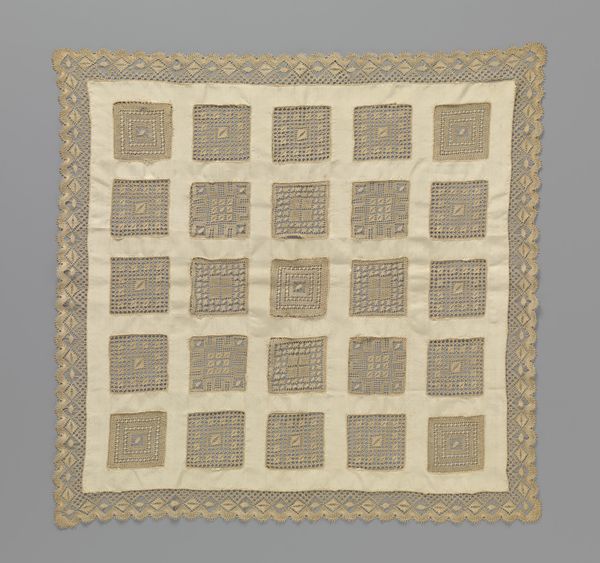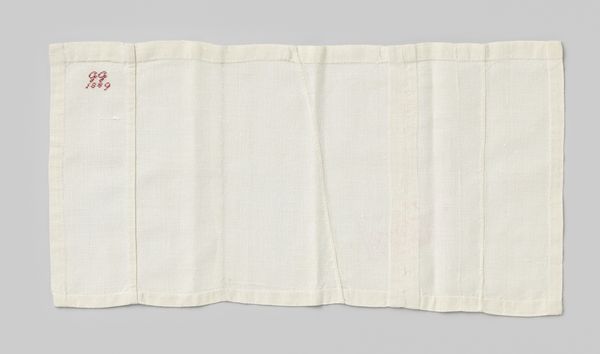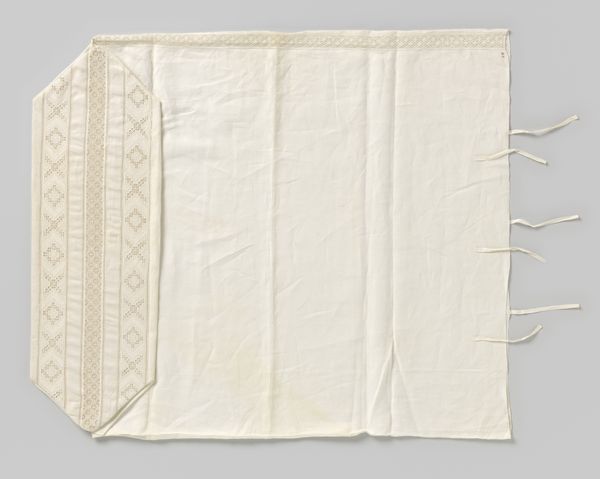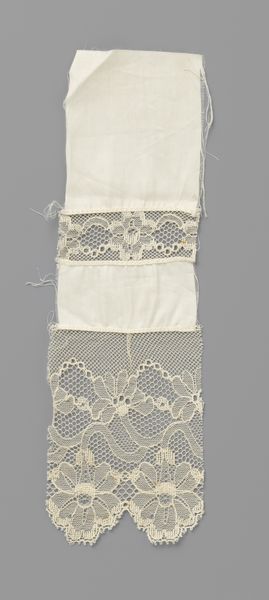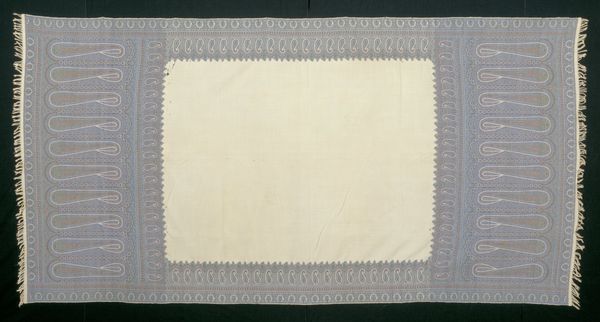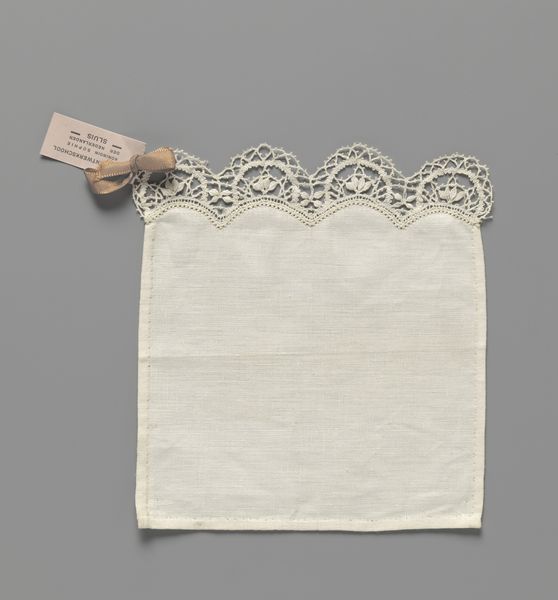
fibre-art, weaving, textile
#
fibre-art
#
weaving
#
textile
#
hand-embroidered
#
fabric design
#
textile design
#
decorative-art
#
layered pattern
Dimensions: height 13.5 cm, width 16 cm
Copyright: Rijks Museum: Open Domain
Curator: It's so unassuming, this piece titled "Witte doek afgezet met rand kant," which translates to "White cloth trimmed with lace." It's attributed to Susanna Maria van Pabst Rutgers-Linse, and judging by its style, it was likely made sometime between 1836 and 1898. Editor: Delicate. It has a quiet presence, almost spectral. The fine, white cloth hints at fragility. I wonder about its original function, or perhaps its symbolic weight within a particular life. Curator: Its function would have been fairly straightforward. Think of it as a highly decorative handkerchief or doily. These weren’t mere afterthoughts. They demonstrated incredible skill and served as indicators of domestic accomplishment. I see you picked up on its ghostly presence... The near monochromatic palette, focusing on subtle differences in texture and pattern, gives it this ethereal feel. Editor: Absolutely. Look at the repetitive geometry of the lace edging – a sort of comforting visual rhythm around the otherwise blank canvas of the fabric. Semiotically, the stark white is very potent, hinting at purity and cleanliness. But there's something also melancholic about it, don’t you think? As if it witnessed…secrets. Curator: Secrets perhaps whispered during intimate moments. These pieces served as more than just practical items; they spoke to social rituals and contained personal narratives. Note how the lace’s structure juxtaposes the soft, woven center. The contrasting textures add depth, pulling the eye. Editor: Exactly, there is so much in this simple little textile, not to mention how we respond as viewers and imagine who was making them with so much dedication, so much heart. I love thinking of her hands painstakingly crafting those tiny loops of lace! Curator: I do too! Every stitch whispers. It makes you consider all of these unsung artistic gestures, the way the human spirit finds creative expression in even the most everyday contexts. Thank you, Susanna Maria, for your artistry! Editor: For proving how meaning can be woven—literally and figuratively—into the very fabric of our lives. A reminder, I suppose, that beauty often resides in the subtle.
Comments
No comments
Be the first to comment and join the conversation on the ultimate creative platform.
